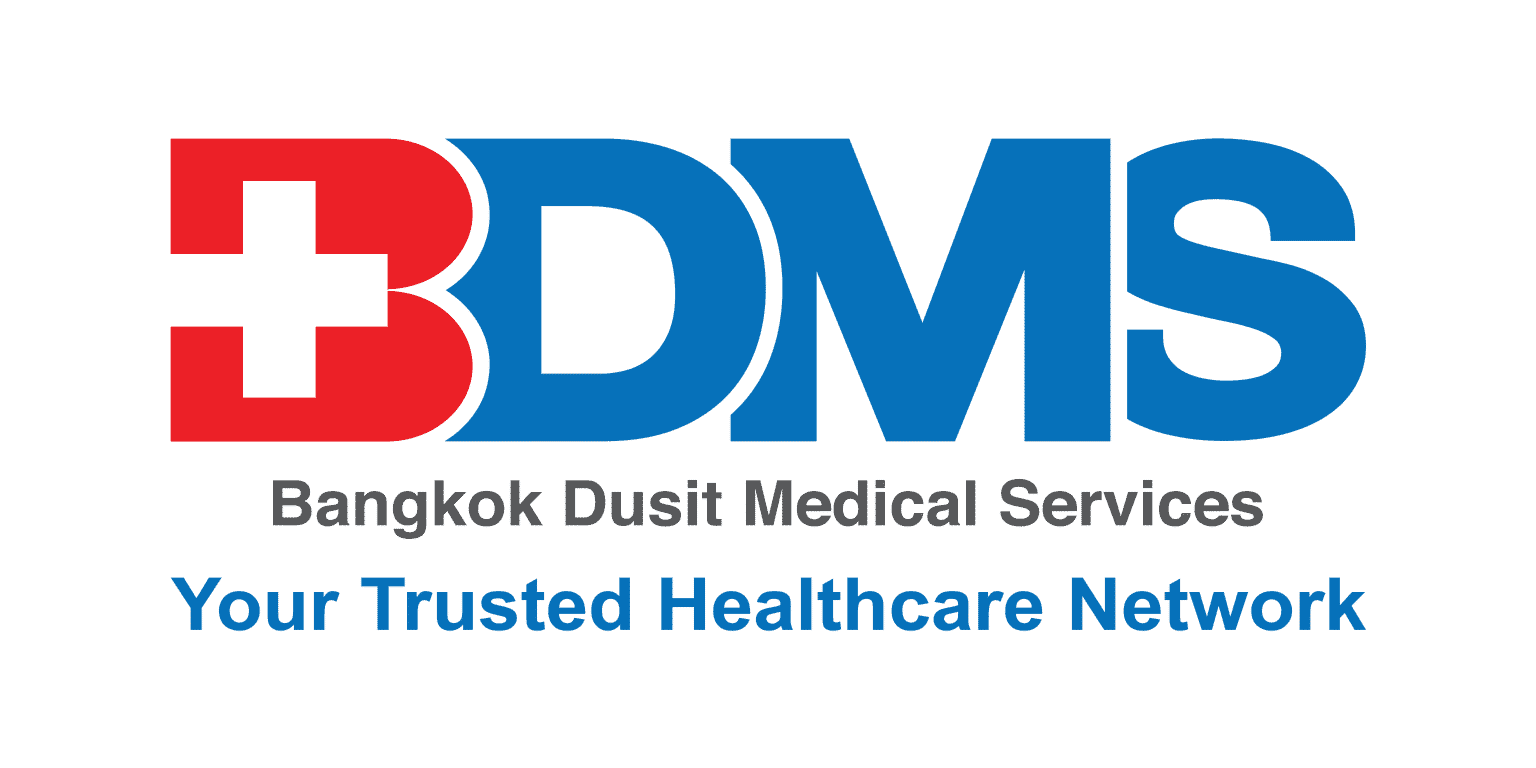
Introduction
There are many instances where people around us or those we know suddenly lose consciousness and pass away unexpectedly, without any warning. This can happen while exercising, working, eating, sleeping, or engaging in daily activities, even when the person appears to be in good health, young, and sometimes an athlete who exercises regularly, eats healthily, sleeps on schedule, and avoids substances. This raises the question for us: could it happen to us too?
In an era where the workplace competition is high and the cost-of-living increases in line with the rapidly changing economy, the responsibility of supporting a family, including children, grandchildren, siblings, etc., becomes more significant. Sudden illness leading to death or disability not only results in a substantial loss of income but also becomes a burden for others to provide care.
A ruptured brain aneurysm is one such condition that can cause sudden death and is a part of cerebrovascular diseases, which have been the leading cause of death among the Thai population since 2014, surpassing cancer and cardiovascular diseases. Brain aneurysms often show no symptoms when unruptured. However, once they rupture, causing bleeding outside the blood vessel, the prognosis and outcomes are usually poor, making it a silent but deadly threat. Should we wait for symptoms to appear before seeking treatment?
Preventing this silent threat is crucial. Understanding how the disease develops, recognizing early signs before symptoms appear, knowing when to see a doctor, and being aware of the various treatments available to cure the condition before any unexpected events occur, can be considered as “ways to cheat death.” This knowledge is essential for overcoming this disease.
Definition of Cerebral Aneurysm
A cerebral aneurysm is a condition where a blood vessel in the brain balloons out due to a weakening of the vessel wall, resembling a balloon. This condition poses a risk of rupture. If the aneurysm ruptures, it can cause bleeding in the brain (subarachnoid hemorrhage), which is a life-threatening situation.
Causes and Risk Factors
The causes of cerebral aneurysms are multifactorial, involving the deterioration of the blood vessels’ strength, making them unable to withstand the blood pressure, thus leading to aneurysms. The primary causes can be categorized into controllable and uncontrollable factors.
Controllable Factors
- Hypertension
– High blood pressure is a major cause, often undetected in many patients who think they are healthy or too young to have high blood pressure. This silent condition can lead to sudden rupture without warning. - Diabetes Mellitus
– This condition causes hardening of the blood vessels, reducing their elasticity and making them more susceptible to aneurysm formation due to the heart’s pumping force. - Hyperlipidemia
– The accumulation of fats in the blood vessel walls leads to inflammation and thinning of the walls due to the enzymes released by white blood cells, resulting in aneurysms.
- Smoking
– Both traditional and electronic cigarettes expose the blood vessels to toxins, particularly nicotine and tar, which damage and weaken the vessel walls and induce inflammation.
- Lack of Exercise
– Physical inactivity leads to loss of vascular elasticity, a risk factor for atherosclerosis. It also contributes to weight gain and increases the risk of obesity and high blood pressure, which are associated with cerebral aneurysms.
- Obstructive Sleep Apnea
– This condition lowers oxygen levels in the blood and stimulates the sympathetic nervous system, raising blood pressure and causing continuous inflammation that damages the blood vessels.
- Substance Abuse
– Drugs like cocaine and amphetamines cause inflammation and weakening of the blood vessels, sudden spikes in blood pressure, and vasoconstriction, which increases the risk of aneurysm and rupture.
- Low-Quality Food
– High-sodium instant foods, high-cholesterol fast foods, and sugary beverages contribute to high blood pressure, elevated cholesterol levels, and obesity. Some dietary supplements containing steroids, hormones, or excessive antioxidants can also raise blood pressure and aneurysm risk.
Uncontrollable Factors
- Age
– The risk of cerebral aneurysms increases with age, especially after 55 years. - Family History
– A family history of cerebral aneurysms significantly increases the risk for an individual. - Gene Mutations
– Certain genetic mutations related to blood vessel structure or blood pressure regulation can increase aneurysm risk. - Genetic Diseases
– Conditions like Polycystic Kidney Disease (PKD) and Ehlers-Danlos Syndrome (EDS) affect blood vessel strength and elasticity, raising the risk of aneurysms. Diseases like CADASIL also weaken blood vessels. - Race
– Some ethnicities, such as Asians and Africans, have a higher risk of developing cerebral aneurysms. - Congenital Conditions
– Some individuals are born with vascular abnormalities that increase the risk of cerebral aneurysms.
Symptoms of a Ruptured Cerebral Aneurysm
A ruptured cerebral aneurysm, causing subarachnoid hemorrhage, requires urgent medical attention due to its life-threatening nature. Symptoms include:
- Sudden Severe Headache
– Described as the “worst headache of life,” this sudden pain is a key symptom. - Nausea and Vomiting
– These symptoms often accompany severe headaches. - Neck Stiffness
– Pain in the neck or nape due to irritation from blood contacting the meninges. - Blurred Vision
– Vision changes, including blurriness, double vision, or partial vision loss, along with sensitivity to light. - Confusion and Loss of Consciousness
– Symptoms include confusion, disorientation, or loss of consciousness. - Neurological Deficits
– Numbness, weakness, or paralysis on one side of the body. - Seizures
– Seizures may occur due to irritation from blood on the brain’s surface.
Understanding these symptoms and risk factors, combined with regular health screenings and lifestyle adjustments, is crucial for early detection and effective management of cerebral aneurysms.
Diagnosis
The diagnosis of cerebral aneurysms can be made through patient history, physical examination, and additional radiological imaging as follows:
Computed Tomography (CT) Scan
A CT scan uses X-rays to create cross-sectional images of the brain. This imaging technique is useful for detecting bleeding in the brain, particularly in the subarachnoid space, which is indicative of a ruptured aneurysm. The procedure is straightforward and quick, typically not requiring the use of a contrast agent. It is often the first-line imaging method for assessing this condition.

Computed Tomography Angiography - (CTA)
CTA is a CT scan technique that involves injecting a contrast agent into a vein to provide clearer images of the blood vessels. This allows the identification of abnormal blood vessels and helps in planning further treatment. CTA is typically performed as a follow-up procedure after an initial CT scan. The process is quick and provides detailed images.


Magnetic Resonance Imaging (MRI)
MRI uses magnetic fields and radio waves to create high-resolution images of the brain. This technique is excellent for detecting brain hemorrhages and detailing the surrounding brain tissue without using X-rays. However, it requires more time and patient cooperation, as the patient must remain still during the procedure.


Magnetic Resonance Angiography (MRA)
MRA is a type of MRI that focuses on the detailed visualization of blood vessels in the brain. It provides clear images of cerebral aneurysms with high accuracy and detail. MRA is a safe imaging technique that uses magnetic fields and radio waves to create images of the brain’s blood vessels. Often, MRA can be performed without the need for contrast agents, making it safer and more convenient, especially for patients with kidney concerns or those who prefer to avoid intravenous contrast injections.

Cerebral Angiography
This procedure involves inserting a catheter into an artery and injecting a contrast agent while imaging to provide detailed views of the brain’s blood vessels. The machine creates 3D images to visualize the vessels thoroughly. Cerebral angiography is considered the gold standard for accuracy and is typically used when additional information is needed or for planning surgical or stent interventions. It is also employed when images from other methods are inconclusive.



Treatment
The primary goal of treatment is to prevent blood from entering the aneurysm sac while maintaining normal blood flow to the brain to reduce the risk of hemorrhage and subsequent increased intracranial pressure. The treatment of cerebral aneurysms depends on the size, location, and overall condition of the patient. Treatment methods include:
Emergency Treatment
In emergencies, if the patient loses consciousness, intubation may be necessary along with controlling blood pressure to normal levels. If the patient has acute hypertension, antihypertensive medication may be administered. Anticonvulsants are given if seizures occur, and medications to reduce intracranial pressure are used if there is significant brain swelling. Basic diagnostic tests are prepared for the next treatment steps. Preliminary surgical procedures, such as temporary cerebrospinal fluid drainage in cases of acute obstructive hydrocephalus, can rapidly reduce intracranial pressure.
Specific and Definitive Treatment
This type of treatment is performed after confirming the presence, size, and location of the cerebral aneurysm:
1. Microsurgical Aneurysm Clipping
– This involves craniotomy to clip the aneurysm, preventing further rupture. A special metal clip is used to occlude the aneurysm, stopping blood flow into it. This method is precise and has a high cure rate but requires open brain surgery.
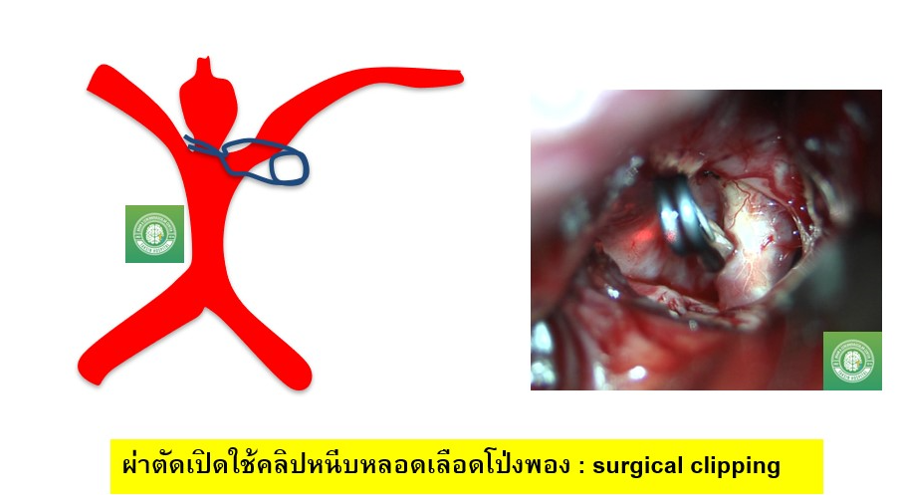
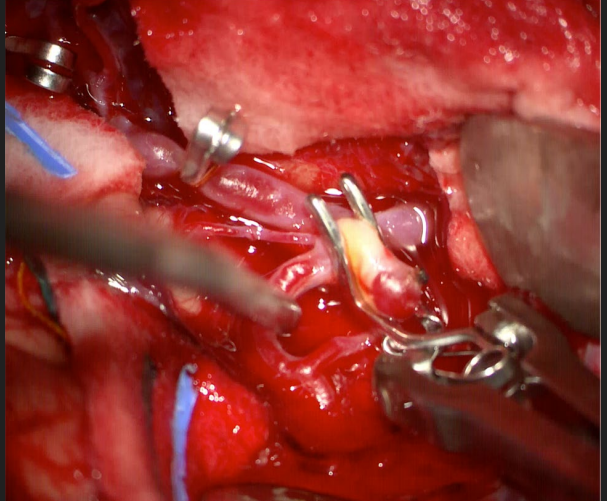
2. Endovascular Coiling
– This minimally invasive technique involves inserting a catheter through the femoral artery to place coils or stents into the aneurysm to prevent rupture. The procedure is performed under digital subtraction angiography (DSA), allowing the physician to visualize the blood vessels with the help of contrast agents. This modern technique is standard, minimally invasive, and causes less trauma compared to open surgery.

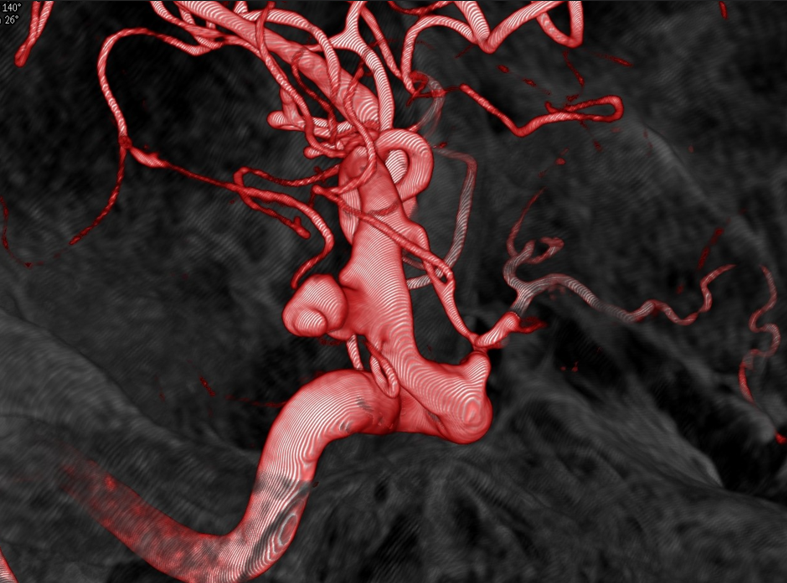
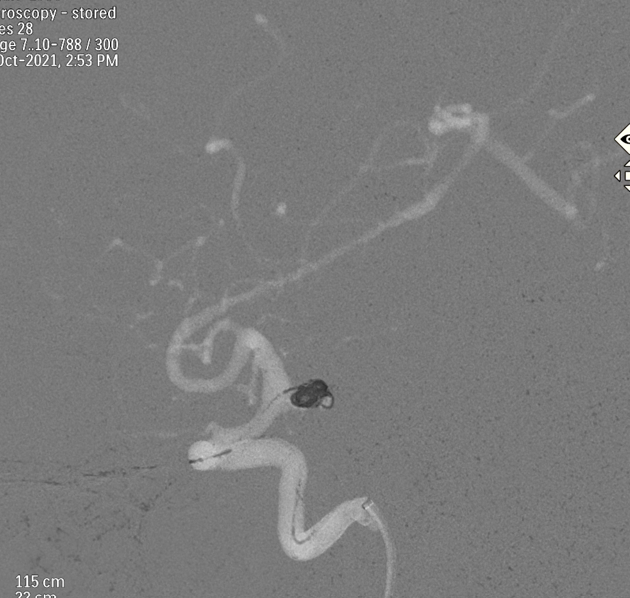
Prevention of cerebral aneurysm formation
Prevention of cerebral aneurysms involves lifestyle changes and health maintenance, such as:
– Quitting smoking
– Controlling blood pressure
– Eating a healthy diet and exercising regularly
– Regular health check-ups to monitor for risk factors
Cerebral Aneurysm Screening
Screening for cerebral aneurysms is crucial for detecting aneurysms before they rupture. Regular screening helps prevent aneurysm rupture and reduce the risk of severe complications. Appropriate screening methods and close follow-up are essential for managing at-risk patients.
Screening Methods
- Medical History and Physical Examination
– The doctor will take a detailed medical history, including family history of cerebrovascular diseases, and perform a physical examination to look for signs and symptoms indicative of cerebral aneurysms. - Magnetic Resonance Angiography (MRA)
– MRA uses magnetic fields to create detailed images of the brain’s blood vessels without the need for contrast agents, avoiding exposure to radiation and the need for intravenous injections. - Computed Tomography Angiography (CTA)
– CTA uses sound waves and contrast agents to create detailed images of the brain’s blood vessels, helping detect aneurysms. - Cerebral Angiography
– This involves inserting a catheter into a blood vessel and injecting contrast dye to obtain detailed images of the brain’s blood vessels. It is the most accurate method but carries higher risks.
Recommended for Screening
- Family History of Cerebral Aneurysms
– Individuals with family members who have had cerebral aneurysms should be screened due to their higher risk. - Genetic Conditions
– Conditions like Polycystic Kidney Disease (PKD) and Ehlers-Danlos Syndrome (EDS) increase the risk of cerebral aneurysms. - Hypertension
– Individuals with high blood pressure should be screened, as hypertension is a significant risk factor. - Smokers
– Smoking is a major risk factor for cerebral aneurysms, and smokers should be screened. - Substance Abuse History
– Users of drugs like cocaine have a high risk of cerebral aneurysms and should be screened.
Conclusion
Cerebral aneurysms are high-risk conditions but can be diagnosed and treated effectively with appropriate care and lifestyle changes. Prevention and treatment help reduce the risk of complications and improve the quality of life. Regular screening is crucial for at-risk groups to detect aneurysms before rupture. Advanced imaging techniques like MRI and MRA offer detailed, safe, and minimally invasive options for diagnosis and treatment, making it possible to “cheat death” effectively.
References
- Kanjonpipulwong, Attakiat. 2020. “Report on the Situation of NCDs, Diabetes, Hypertension, and Related Risk Factors in 2019.” Bangkok: Aksorn Graphic and Design Publishing. ISBN 978-616-11-4313-8.

Assoc. Prof. Ittichai Sakarunchai, M.D.
Assistant Professor of Neurosurgery & Interventional Neuroradiology
BNH Neuroscience Centre



